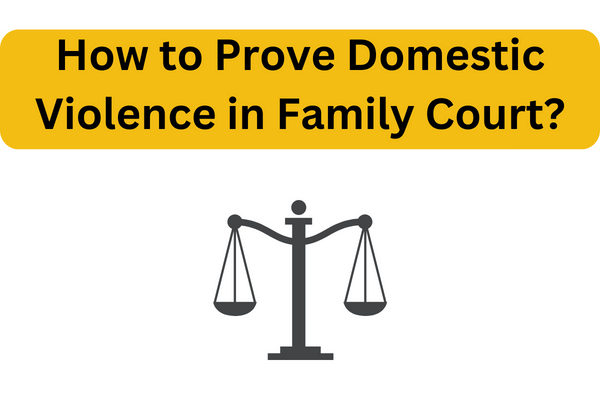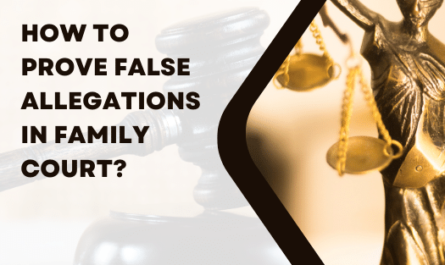How to Prove Domestic Violence in Family Court?
Domestic violence is a distressing and deeply concerning issue that affects numerous families worldwide. For those enduring such traumatic experiences, seeking justice and protection through the family court system becomes a crucial step towards a safer and healthier life. However, proving domestic violence in family court can be a challenging task, demanding strong evidence and strategic presentation. In this article, we will explore the essential steps to prove domestic violence in family court and ensure the safety and well-being of the victims.
Understanding Domestic Violence
Defining Domestic Violence
Domestic violence encompasses a range of abusive behaviors, not solely limited to physical harm. It can include emotional abuse, financial control, sexual assault, and psychological manipulation. Understanding the different forms of abuse is vital to recognize and address the issue effectively.
Types of Domestic Violence
Domestic violence can manifest in various ways, such as:
- Physical Abuse: Inflicting bodily harm, causing injuries, or using physical force to control.
- Emotional Abuse: Undermining self-esteem, isolation, threats, and intimidation.
- Financial Abuse: Controlling finances, restricting access to resources.
- Sexual Abuse: Forcing unwanted sexual activities without consent.
- Psychological Abuse: Manipulation, gaslighting, and demeaning behavior.
Gathering Evidence of Domestic Violence
To prove domestic violence in family court, substantial evidence is necessary. Victims must focus on gathering credible information to support their claims effectively.
Documenting Incidents
Keeping a detailed record of every abusive incident is crucial. Victims should note the date, time, location, and description of each event, including any witnesses present.
Collecting Witnesses’ Testimonies
Testimonies from witnesses who have observed the abusive behavior can significantly strengthen the case. Friends, family members, or neighbors who have seen or heard the violence can provide vital support.
Gathering Physical Evidence
Preserving any physical evidence, such as photographs of injuries or damaged property, can bolster the case’s credibility.
Obtaining Medical Reports
Seeking medical attention after incidents of abuse is essential. Medical reports can serve as crucial evidence to substantiate claims of domestic violence.
Filing a Petition in Family Court
To begin the legal process, victims of domestic violence must file a petition in family court. This is a critical step to obtain a restraining order and ensure their safety.
Seeking Restraining Orders
Obtaining a restraining order is often the first priority for victims. It restricts the abuser from approaching or contacting the victim and provides a sense of security.
Appointing an Attorney
Hiring an experienced family lawyer is highly recommended. An attorney can guide victims through the legal process and advocate on their behalf.
Submitting the Evidence
Presenting all gathered evidence is essential when filing the petition. Providing a comprehensive overview of the abuse endured will be crucial during the court proceedings.
The Importance of Legal Representation
Navigating the family court system can be daunting, making legal representation invaluable for victims.
Role of a Family Lawyer
A family lawyer specializes in domestic violence cases and understands the complexities involved. They provide expert advice and representation, ensuring the victim’s rights are protected.
Understanding the Legal Process
A family lawyer will guide the victim through the court process, explaining the steps involved and what to expect during the proceedings.
Presenting Your Case in Court
Facing the court can be emotionally challenging for victims of domestic violence. Presenting the case effectively is crucial for a successful outcome.
Being Truthful and Calm
Remaining composed and truthful while presenting the case will leave a more profound impact on the court.
Organizing Your Evidence
Presenting evidence in a clear and organized manner will help the court better understand the situation.
Explaining the Impact of Domestic Violence
Describing the emotional, physical, and psychological toll of the abuse can significantly influence the court’s decision.
The Legal Decision and Consequences
The court will carefully evaluate the evidence presented before making a decision.
Court’s Evaluation
The court will assess the evidence, testimonies, and arguments from both parties to determine the validity of the claims.
Possible Outcomes
Depending on the evidence and severity of the abuse, the court may grant a restraining order, order anger management counseling, or issue other protective measures.
Child Custody and Domestic Violence
When domestic violence is involved, child custody becomes a critical aspect of the legal proceedings.
Ensuring Child Safety
The court prioritizes the safety and well-being of children. Evidence of domestic violence may impact custody arrangements to ensure the children’s protection.
Impact on Custody Arrangements
The court may alter custody arrangements or implement supervised visitation to protect the child from potential harm.
Seeking Support and Counseling
Survivors of domestic violence need emotional support and counseling to recover from the trauma.
Psychological Assistance
Professional counseling can aid victims in overcoming the emotional scars left by domestic violence.
Support Groups for Victims
Joining support groups allows survivors to connect with others who have faced similar challenges, fostering a sense of community and understanding.
FAQs: How to Prove Domestic Violence in Family Court?
- What are the common signs of domestic violence?
- Common signs include physical injuries, emotional distress, social isolation, and controlling behavior by the abuser.
- Can I get a restraining order immediately?
- In emergency cases, temporary restraining orders can be obtained immediately for immediate protection.
- How long does the family court process take?
- The duration varies, but it may take several weeks to months, depending on the court’s schedule and complexity of the case.
- What happens if my evidence is not enough?
- Insufficient evidence may impact the case’s outcome. Consult with a family lawyer to explore other legal options.
- How can I protect my children from the abuser?
- Seeking a restraining order and providing evidence of abuse can help protect your children from the abuser’s harm.
Conclusion: How to Prove Domestic Violence in Family Court?
Proving domestic violence in family court is a daunting but necessary step for victims seeking justice and protection. Gathering substantial evidence, hiring a family lawyer, and presenting the case effectively are essential elements of this process. By understanding the legal intricacies and seeking emotional support, survivors can navigate through this challenging period and work towards a brighter future.
Visit the link to read more: https://family-fitness-fun.com/how-to-get-a-jury-trial-in-family-court/





